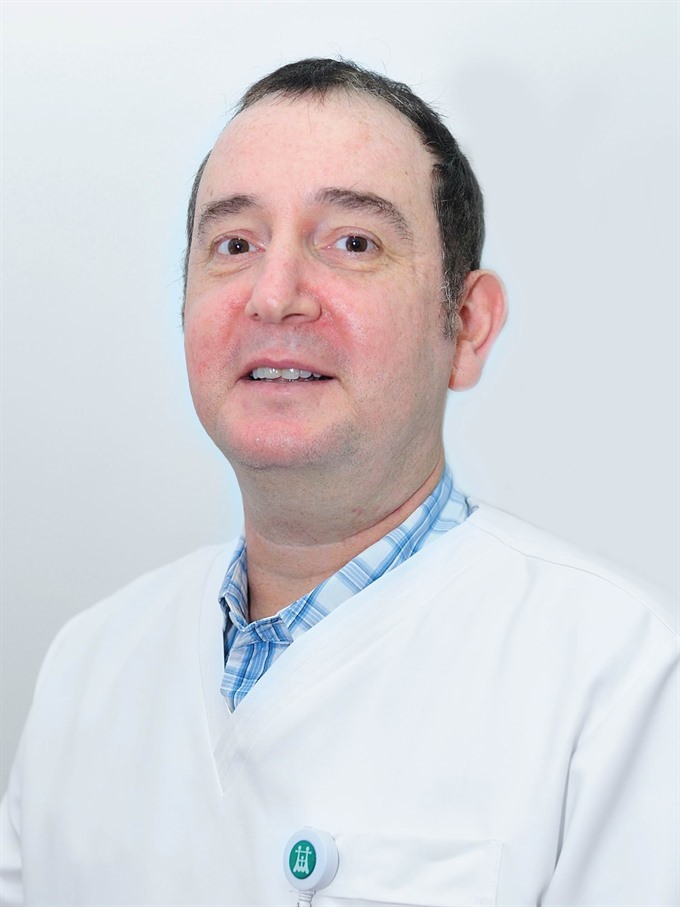 Life & Style
Life & Style

World Blood Donor Day has been held annually since 2004 on June 14. It was launched in Johannesburg, South Africa, following the success of World Health Day 2000, which was devoted to the theme “Blood Saves Lives. Safe Blood Starts With Me”. The enthusiasm and energy with which this day was marked was a powerful and positive response to the opportunity to thank the millions of people who give the precious gift of life through their donation of blood every year.
 |
| Doctor Yaron Atzmon.—Photo Courtesy of Family Medical Practice Vietnam |
By Dr. Yaron Atzmon *
World Blood Donor Day has been held annually since 2004 on June 14. It was launched in Johannesburg, South Africa, following the success of World Health Day 2000, which was devoted to the theme “Blood Saves Lives. Safe Blood Starts With Me”. The enthusiasm and energy with which this day was marked was a powerful and positive response to the opportunity to thank the millions of people who give the precious gift of life through their donation of blood every year.
The aim of designating this annual day and linking it to a global celebration was to promote voluntary non-remunerated blood donation throughout the world. By designating one special day to celebrate the role of voluntary blood donors around the world, it is hoped that a new generation of blood donors will follow their example, providing sufficient supplies of the safest blood possible for use wherever and whenever it is needed to save lives. Worldwide last year about 92 million people donated their blood. However more is needed. In Vietnam only 0.88 per cent of the population donates blood on a regular basis.
There are several types of blood donation:
Whole blood. This is the most common type of blood donation. Approximately one pint of whole blood is drawn and then separated into its components — red cells, plasma, platelets.
Platelets. This type of donation uses a process called apheresis. The donor is hooked up to a machine that collects the platelets and some of the plasma, and then returns the rest of the blood to the donor.
To be eligible to donate whole blood, platelets or plasma, you must be: In good health, at least 17 years old — the minimum age varies by country but there’s no upper age limit, weigh at least 110 pounds (50 kg) and able to pass the physical and health history assessments
Are there any risks to the donor?
Blood donation is safe. New, sterile disposable equipment is used for each donor, so there’s no risk of contracting a blood-borne infection.
How to prepare
Maintain a healthy diet that includes iron-rich foods, such as spinach, red meat, fish, poultry, beans, iron-fortified cereals and raisins. Avoid fatty foods, such as hamburgers, fries or ice cream before donating as this may affect your tests. Drink an extra 16 ounces (473 milliliters) of water and other fluids before the donation.
Because of the risk of blood-borne infections, not everyone can donate blood. The following high-risk groups are not eligible in many countries:
ü Anyone who has ever used illegal injection drugs or steroids not prescribed by a physician;
ü Men who have had sexual contact with other men since 1977 (although this is now under review in many countries);
ü Anyone who has ever received clotting factor concentrates;
ü Anyone with a positive test for HIV (AIDS virus);
ü Anyone who has had hepatitis since childhood;
ü Anyone who has had babesiosis or Chagas’ disease;
ü Anyone who has taken etretinate (Tegison) for psoriasis;
ü Anyone who has risk factors for Creutzfeldt-Jakob disease (CJD) or who has a blood relative with CJD or lived in certain countries during specific years.
After a brief physical examination (including blood pressure, pulse and temperature), a small sample of blood is taken and is used to check your hemoglobin level. If your hemoglobin concentration is normal and you’ve met all the other screening requirements, you can donate blood.
During the procedure
You lie or sit in a reclining chair with your arm extended on an armrest. A tourniquet (BP cuff) is placed around your upper arm to fill your veins with more blood. Then the skin on the inside of your elbow is cleaned. A new, sterile needle is inserted into a vein in your arm. This needle is attached to a thin, plastic tube and a blood bag. Blood initially is collected into tubes for testing. When these have been collected, blood is allowed to fill the bag, about a pint. The needle is usually in place about 10 minutes. A dressing is wrapped around your arm after the needle is removed.
After the procedure
Rest for 10 to 15 minutes, and you can leave but you must: Drink extra fluids for the next day or two and avoid strenuous physical activity for the next five hours.
Your blood type will be determined - classified as A, B, AB or O - also your Rh factor. This information is important because your blood type and Rh factor must be compatible with the blood type and Rh factor of the person receiving your blood. Next, your blood will also be tested for hepatitis, HIV and syphilis. If these tests are negative, the blood is distributed for use in hospitals and clinics. If any of these tests are positive, the blood bank notifies you, and your blood is discarded.
At FMP Vietnam we operate a Walking Blood Bank. For information please contact our clinics.— Family Medical Practice Vietnam.
* Doctor Yaron Atzmon has lived in Hà Nội since 2006 and has served as Clinic Director at Family Medical Practice Hanoi. He is also a member of the Israeli Board of Internal Medicine Physicians.
For more advice on any medical topics, visit Family Medical Practice Hanoi on 298 Kim Mã, Ba Đình or call (024) 3843 0748. Email: hanoi@vietnammedicalpractice.com
FMP’s downtown HCM City location is at Diamond Plaza, 34 Le Duan, District 1; Other facilities are at: 95 Thảo Điền Street, District 2. Tel: (028) 38227848. E:hcmc@vietnammedicalpractice.com
FMP Danang is located at 96-98 Nguyễn Văn Linh Street, Hải Châu District, Đà Nẵng. Tel: (0236) 3582 699. E: danang@vietnammedicalpractice.com.


.jpg)





.jpg)
